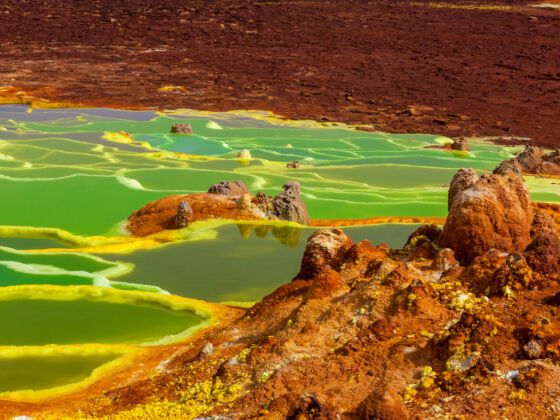Locals call it the “gateway to hell.”
This barren, inhospitable landscape is one of the world’s lowest, most geologically active areas. Earthquakes, volcanoes, lava lakes, and bubbling sulfur springs are the norm, rather than the exception. The sulfur mixes with iron oxides, copper salts, and other minerals, leaving behind an array of otherworldly colors. The acid lakes are as deadly as they are beautiful.
